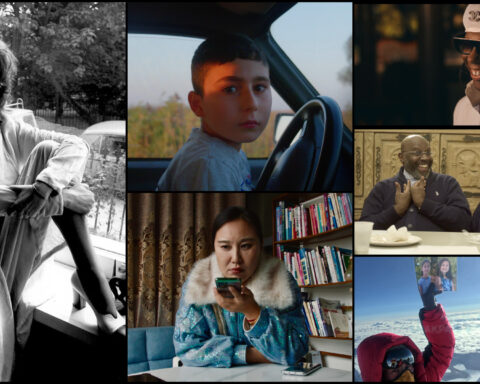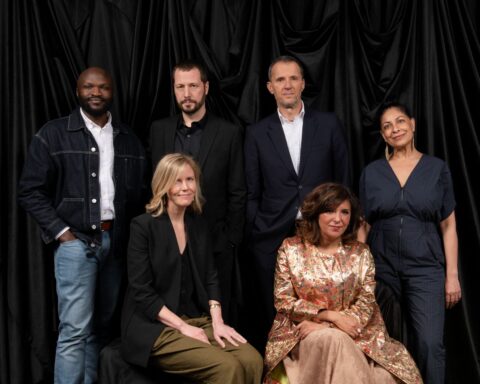Is My Living in Vain
(UK/New Zealand/France, 41 min.)
Dir. Ufuoma Essi
Programme: World Showcase (International Premiere)
One cannot accuse the Hot Docs audience of having basic taste. One rarely expects an experimental mid-length documentary to command the leaderboard at the festival. However, as of publication, Is My Living in Vain topped the Hot Docs Audience Award rankings for four consecutive days. On one hand, the popularity of this title suggests that Torontonians have discerning taste. Similarly, one might see the selection as reflective of increased adventurousness in the programming this year. For a festival that often (unfairly) gets accused of favouring conservative aesthetics (blame the broadcasters!), Is My Living in Vain proves that these films are well in abundance at Hot Docs and that people respond to them.
Director Ufuoma Essi delivers a personal lyrical visual essay about the role of the church in Black communities. Is My Living in Vain, which draws its name from a hymn that bookends the soundtrack, features 16mm shots of churches in West Philadelphia and South East London. Essi, working with cinematographers Cheryl Hess and Morgan K. Spencer, observes traditions and community ties that bridge oceans. The film rhythmically offers shots of the churches’ interiors. Essi views pews askew, for example. Cameras tilt upwards to observe vaulted ceilings that invite parishioners to crane their necks up to high heavens. Crosses offer iconic markers, while signs (“Jesus saves!”) advertise the word to welcome folks. The buildings show signs of decay, too. They’ve seen many years and remain bedrocks amid changing communities.
People of the Parish
Essi also gives ample space to the parishioners and pastors. Black bodies gradually enter the frame amid the observations of facades and fixtures. Is My Living in Vain at first favours hands: hands clapping, hands clasped, and hands weathered by time. Eventually, though, the film features shots of folks at mass—praying, singing hallelujah, and generally congregating.
The real soul of the film, though, lives in voiceover. Essi features audio interviews as a chorus of displaced narrators reflect upon the church’s significance in a time of change. Interviewees share thoughts about community spirit and the power of community. The creative mode evokes oral storytelling and words passed between generations. Elders talk about the role churches play in connecting the needy with helping hands. It’s something they see less of today as fewer young folk go to mass.
The weathered hands and well-trodden pews give way to conversations about gentrification. Pastors note in voiceover how the changing landscape of the city pushes out long-time residents. Families move out and young professionals move in. Elders again note how young doctors moving into condos might not want to shovel a stranger’s snow. A pastor, meanwhile, reflects how the church isn’t really a social services board. A leader also makes a frank assessment: if all the supports leave and the church remains the constant presence in a changing environment, it has a responsibility to its community.
Is My Living in Vain artfully considers the role of the organized religion as times change. The interviewees contemplate the necessity for inclusion to ensure the church’s survival. Some people grumble while others agree. As the shots offer images of churchgoers in ecstasy while singing in mass, though, Essi shows how community spirit endures as people come and people go.














